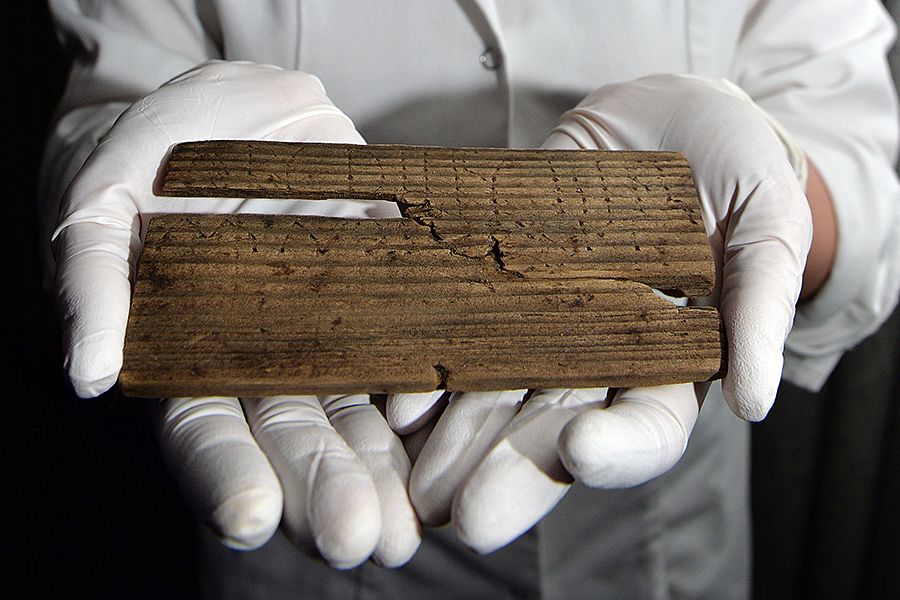Britain's oldest hand-written document unearthed in London dig
Loading...
Archaeologists in London have announced the discovery of a trove of ancient documents, including one from 57 AD, the earliest recorded example of a handwritten document anywhere in Britain.
The artifacts, dating from the earliest days of Roman London, were found during excavations for Bloomberg’s new European headquarters, and they have already more than quadrupled the number of legible Roman writing tablets ever unearthed in the city, with hundreds yet to be analyzed.
While the tablets may be the most exciting find, they represent the tip of a rich archaeological iceberg, excavators from the Museum of London Archaeology (MOLA) having uncovered 50 Roman buildings and 15,000 Roman artifacts.
“You never know quite what you’re going to find with archaeology,” said MOLA’s Sophie Jackson in a video chronicling the find. “We were hopeful with the Bloomberg site because it’s right in the heart of the city of London.... What we actually found completely blew us away.”
The site yielded 405 writing tablets. Originally, the tablets comprised blackened beeswax nestled into recesses in wooden frames. The wax has long since decomposed, but the wood, against expectations, survived.
Normally, such ancient wood rarely survives burial in the ground, but rotting was prevented by the wet mud of the Walbrook river, a river now buried but visible to Londoners of the Roman era.
As such, these wooden segments can reveal letters that made their way through the wax as they were inscribed, leaving impressions in the underlying wood. Previously, only 19 legible tablets were known to have been found in London, but the Bloomberg find has already added 87.
One of them, dated to 65 AD, is “the first time we have London mentioned, ever, in history,” as Ms. Jackson describes it. London was initially founded only a couple of decades earlier, after the Roman invasion of 43 AD, then destroyed in a Celtic rebellion headed by Queen Boudica in 61 AD.
As this tablet illustrates, talking of mundane financial matters only four years later, the city wasted no time in rising again from the ashes of destruction.
The task of deciphering the tablets is painstaking. First, multiple photos are taken at various angles, each trying to tease out shadows from the vestiges of letters. These pictures can then be layered on top of one another, creating an image with as intricate a portrayal of the letters as possible.
It then falls to Roger Tomlin, an expert in Roman cursive, to analyze the shapes and discern meaning, if any is to be found.
“You must have an imagination,” explains Dr. Tomlin, in the same video, “but you must control it rigidly.”
The tablets have been conserved by MOLA specialists, employing a mix of polyethylene glycol – also used to preserve the Tudor flagship, Mary Rose – and freeze drying.
More than 700 artifacts from the dig will be on display in an exhibition within the new Bloomberg building, once it opens.
This report contains material from the Associated Press.






